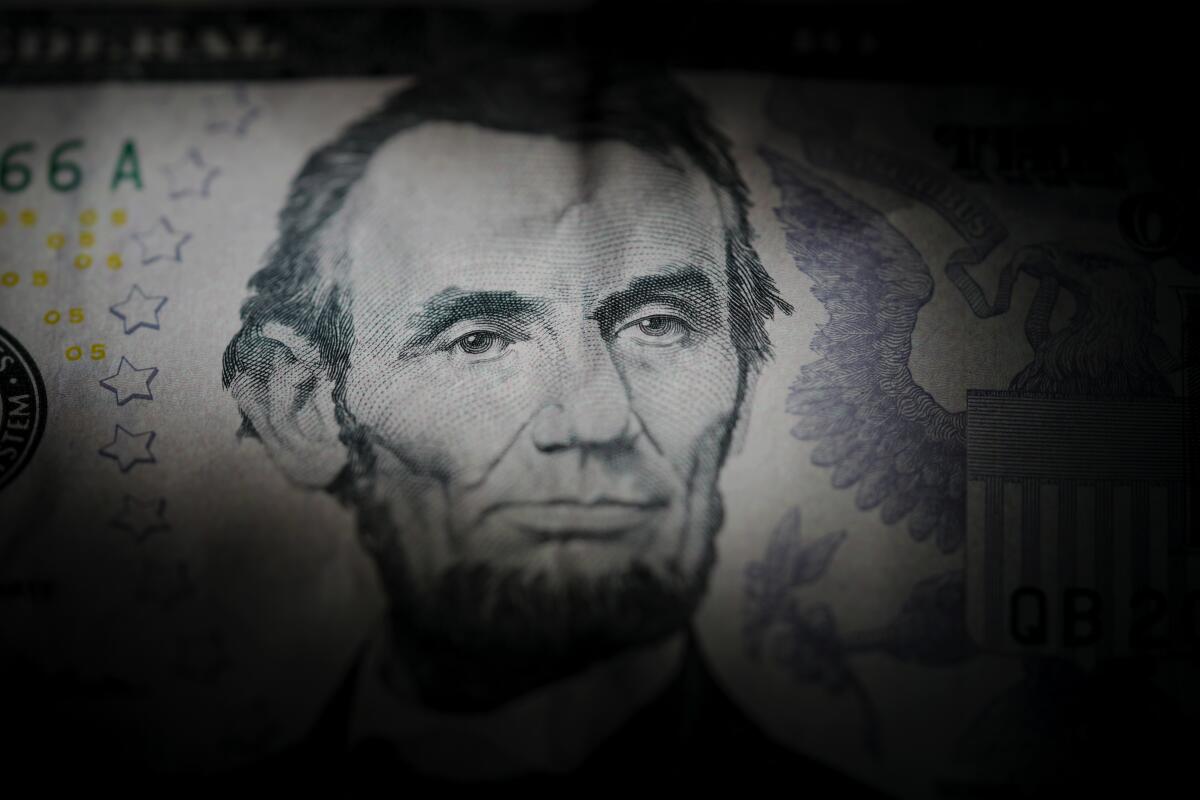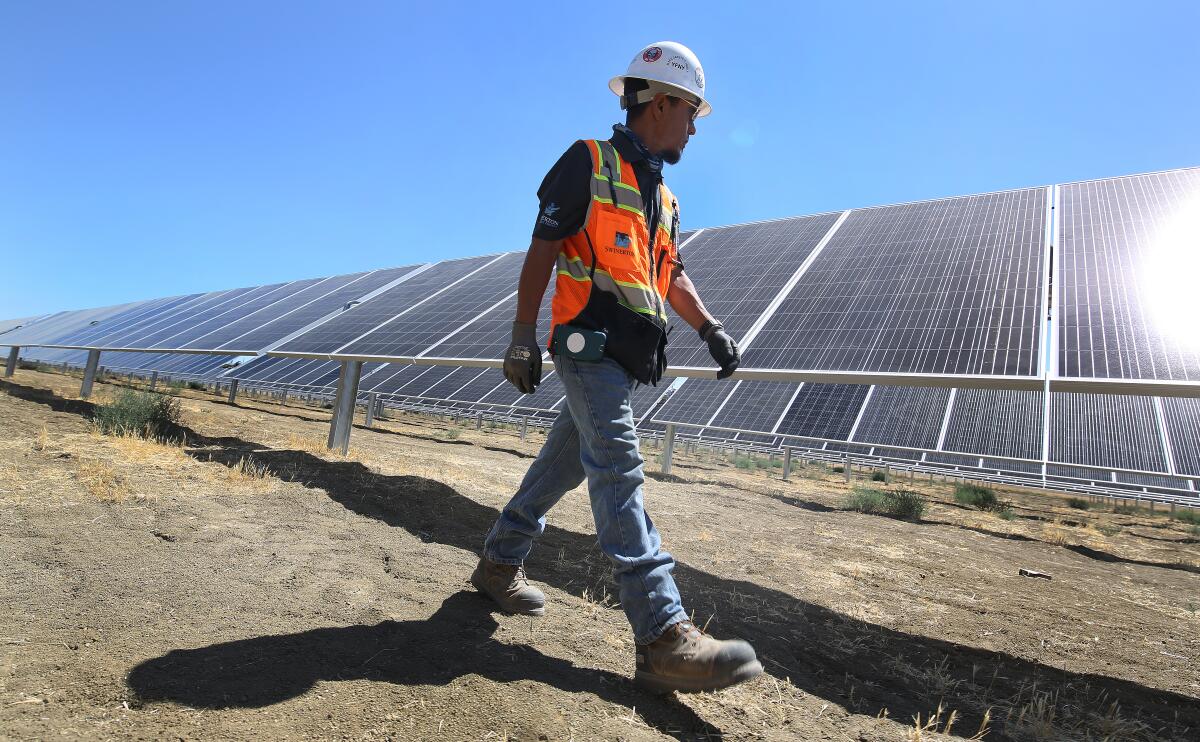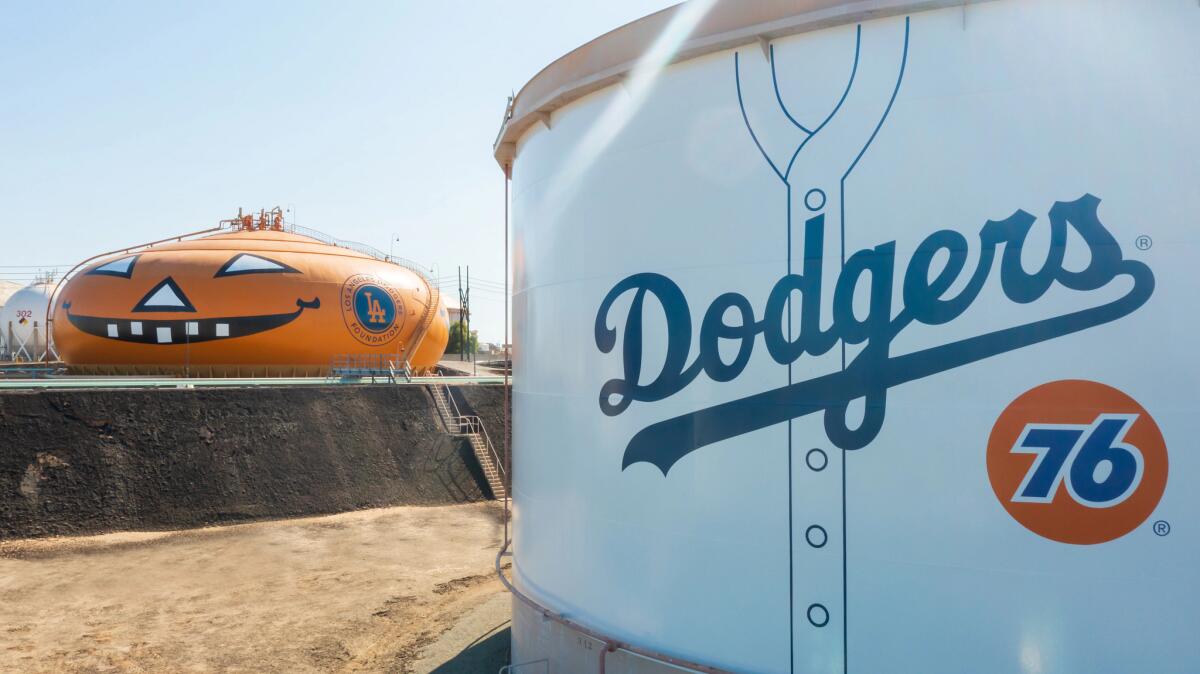Column: American democracy is at stake. So is the planet’s climate

“There is, even now, something of ill-omen amongst us. I mean the increasing disregard for law which pervades the country; the growing disposition to substitute the wild and furious passions, in lieu of the sober judgment of Courts; and the worse than savage mobs, for the executive ministers of justice.”
Abraham Lincoln spoke these words in 1838, part of his Lyceum Address. He was 28 years old then, a member of the Illinois House of Representatives and still more than two decades from the White House and the Civil War.
But he sensed that America was in danger.
Stirred by the lynching of a Black man in St. Louis and the murder of an abolitionist newspaper editor, the future president warned that the nation’s political institutions — and along with them civil rights and religious liberty — could crumble in the face of mob violence, disregard for the law and a politics dominated by revenge.
If the American democratic experiment were to fail, he said, no foreign adversary could ever be to blame.
“If destruction be our lot, we must ourselves be its author and finisher,” Lincoln prophesied.
You're reading Boiling Point
Sammy Roth gets you up to speed on climate change, energy and the environment. Sign up to get it in your inbox twice a week.
You may occasionally receive promotional content from the Los Angeles Times.
I know this newsletter is supposed to be about climate change. But as Americans vote in the most consequential presidential election of our lifetimes so far, I keep thinking climate change is part of a larger historical story.
And Lincoln’s words keep springing to mind.
This weekend, former President Trump told supporters that he doesn’t mind if journalists — people like me and my L.A. Times colleagues — get shot. He said he “shouldn’t have left” the White House after he was voted out of office in 2020, a reminder of the violent Jan. 6 riot that he fomented with his lies and incitements. He once again called global warming a “hoax,” citing Sunday’s cool weather in Pennsylvania as (absurd) evidence.
Maintaining our democracy, Lincoln said, would require “general intelligence, sound morality, and in particular a reverence for the constitution and laws” — all qualities that Trump not only lacks but so clearly disdains.

It’s hard to know exactly what will happen if Trump defeats Vice President Kamala Harris.
Will the United States find a way to live up to its founding principles? Will we keep respecting the rule of law, and treating all people with dignity and respect, and listening to science and reason? Or will we succumb to our worst instincts, and tie our collective fate to the whims of a racist, vengeful authoritarian?
Even if Harris wins, the terrifying political forces that empowered Trump won’t disappear any time soon.
The Times’ Jeffrey Fleishman recently described a “culture of retribution” that has seen Trump supporters harass librarians, threaten election workers and target scientists in conspiracy theories. Trump has said that immigrants are “poisoning the blood of our country” — sounding like “a newsreel from 1930s Germany,” Fleishman wrote.
As an American Jew, that kind of language terrifies me.
My grandfather, a rabbi who died this year, made it out of Europe before the Holocaust. But much of his extended family was killed. And as he and others taught me, the Nazis didn’t just murder Jews. They killed millions of others deemed inferior, including Soviets, Poles, Roma, people with disabilities, gay men and their political enemies.
I don’t really think we’re on the cusp of another Holocaust, at least not yet. I do think it’s worth taking stock of the fact that when we refer to the “American democratic experiment,” we’re not just using a fun turn of phrase.
This nation is still very much an experiment. The fact that it may feel permanent and unshakable means nothing if we don’t fight like hell to defend it. Reelecting Trump wouldn’t necessarily mean we’ve failed, although it would certainly tip the scales in the wrong direction. Similarly, electing Harris wouldn’t mean we’ve succeeded.
Again, Lincoln: “If destruction be our lot, we must ourselves be its author and finisher.”
Let’s say democracy endures. Can we sustain a livable planet too?
It’s harder to turn to Lincoln for guidance here.

But in 1824, 14 years before the Lyceum Address, French physicist Joseph Fourier first proposed what we now call the greenhouse effect — the idea that certain gases can trap heat in the atmosphere, thus increasing the planet’s surface temperature. That means we’ve had the origins of climate change science for two centuries.
Before Lincoln was born, actually, the Industrial Revolution had begun, marking the dawn of the fossil fuel era — which continues today with ever-deadlier heat waves, fires and floods. The year after Lincoln was assassinated by slavery supporter John Wilkes Booth, strip-mining of coal got started in Lincoln’s home state of Illinois.
I’d like to think the 16th president would follow the science and support a rapid shift to climate-friendly energy — in part because climate justice also means racial justice, the cause that has come to define Lincoln’s presidency.
As scientists and advocacy groups including the NAACP have noted, people of color and low-income families are more likely to suffer from air polluted by fossil fuels and weather disasters exacerbated by higher temperatures. That’s both because of where those people live and because they have less money to protect themselves.
These racial disparities are no accident. They’re legacies of the systemic injustices that Lincoln tried to extinguish and that Trump eagerly uses as political kindling. Let’s not forget that it took a full century after the Civil War — by which time Trump was a teenager, and Harris was just being born — to abolish the legal doctrine of “separate but equal” segregation. It’s impossible to separate climate action from racial equity. History is alive and well.
That’s why I’m proud of the work we’re doing at the L.A. Times. Our 17-person Climate California reporting team is dedicated to covering air quality, environmental justice, water, wildlife, public lands, the Pacific coast and more. Any hope of a safe, equitable future for all Americans rests in part, as Lincoln knew, on a robust free press.
I can’t tell you my employer is perfect.
Like many L.A. Times reporters, I was stunned and frustrated by our owner’s decision to block our editorial board from endorsing in the presidential election. (The board had planned to endorse Harris.) I sympathize with readers who have canceled their L.A. Times subscriptions as an act of protest against our owner, Patrick Soon-Shiong.
But I’d urge you to keep supporting our work. If you’ve canceled, I’d ask you to please consider resubscribing. My colleagues and I need you now more than ever. We need you to stand with us and demand a better L.A. Times.
If Harris wins, we’ll hold her accountable to her climate promises and investigate whether she hews to the more fossil fuel-friendly agenda she hinted at while campaigning. If Trump wins, we’ll closely scrutinize his appointees, knowing his supporters have called for demolishing weather agencies and downsizing national monuments.
One way or another, the work will continue. The story isn’t finished.
“Whenever the vicious portion of population shall be permitted to gather in bands of hundreds and thousands, and burn churches, ravage and rob provision stores, throw printing presses into rivers, shoot editors, and hang and burn obnoxious persons at pleasure, and with impunity; depend on it, this Government cannot last.”
It needs to last. For our planet, and for ourselves. Let’s make Honest Abe proud.
On that note, here’s what’s happening around the West:
THE ENERGY TRANSITION

In California’s San Joaquin Valley, an agricultural water district is collaborating on the world’s largest solar farm. It could end up being roughly the size of Detroit, Politico’s Camille von Kaenel and Wes Venteicher report.
That’s great news! It also doesn’t mean we can easily put all renewable energy development on agricultural land, and negate the need for some projects on undisturbed ecosystems; as I’ve written previously, there are plenty of thorny conflicts to be navigated in agriculture country too. Which is why we end up with stories like these:
- After years of pushback from the Yakama Nation, conservation activists and local governments, Washington Gov. Jay Inslee approved what will probably be the state’s largest wind farm. (Conrad Swanson, Seattle Times)
- Environmental activists and a Western Shoshone group have sued the federal government to block a lithium mine in Nevada. The mine would supply electric vehicle batteries. (Alan Halaly, Las Vegas Review-Journal)
In related news, I enjoyed chatting with Peter O’Dowd for NPR’s Here & Now about the SunZia power line. It’s being built to send enormous amounts of wind energy from New Mexico to California and Arizona.
Also, speaking of SunZia: The Arizona Daily Star’s Henry Brean reports that groundwater pumping by the electric line’s developer briefly led to a municipal well going dry in an area already heavily overpumped by farmers.
The more renewable energy facilities are built to replace coal- and gas-fired power plants, the better it will be for the climate as people switch to electric cars and electric heating. Some good news on electrification:
- Electric vehicle sales are back on the rise in California, even as Tesla sales decline. (Russ Mitchell, L.A. Times)
- With $411 million in funding from President Biden’s Inflation Reduction Act, the Port of Los Angeles may be able to phase out more than a quarter of its polluting diesel equipment. (Tony Briscoe, L.A. Times)
- An innovative new plan using a quarter-billion dollars in Inflation Reduction Act funding will help finance up to 500 new electric trucks for the ports of Los Angeles and Long Beach. (Jeff St. John, Canary Media)
- California regulators may require 50% of newly sold motorcycles to be electric or hydrogen starting in 2035. Gas-fueled motorcycles would be required to slash their pollution. (Alejandra Reyes-Velarde, CalMatters)
Few Californians will want to go electric if electricity keeps getting more expensive — hence all the focus among state lawmakers on reducing electric rates. Alas, I doubt Gov. Gavin Newsom’s latest action — an executive order asking state agencies to find ways to stop rates from rising so fast, reported here by The Times’ Melody Petersen — will change much of anything. Everyone knows this is a problem. We need solutions, not hand-wringing.
We also need to figure out how to clean up aviation, which is a lot harder than cleaning up electricity. On that front, my colleague Russ Mitchell reports that airlines are partnering with the California Air Resources Board to develop cleaner-burning jet fuel. Some environmentalists are skeptical, saying biofuels are still pretty dirty.
ON THE LANDSCAPE

Protecting wildlife has never been more important. It has also never been more difficult.
Just look at the bridge over the 101 Freeway in Southern California’s Agoura Hills that will form the foundation of the world’s largest wildlife crossing. As The Times’ Jeanette Marantos reports, the bridge is now in place — but in a climate-tinged twist, extreme storms and heat have delayed the overall crossing’s completion until 2026.
In other unfortunate animal news:
- Wyoming’s most famous grizzly bear was killed by a driver outside Grand Teton — a painful reminder that national parks “aren’t enough to protect wide-ranging species like grizzlies.” (Kylie Mohr, High Country News)
- The deadly fungus that causes white-nose syndrome in bats is now in California. (Lila Seidman, L.A. Times)
- Because California’s strained water delivery systems don’t have enough challenges, invasive golden mussels have been found for the first time in the Sacramento-San Joaquin River Delta. (Rosanna Xia, L.A. Times)
In better animal news:
- Scientists have figured out a way to help Lahontan cutthroat trout spawn again in a tributary of Lake Tahoe, nearly a century after humans wiped out the fish from the lake. (Amy Alonzo, the Nevada Independent)
- A bill proposed in Congress would add 118,000 acres ringing the San Fernando, La Crescenta, Santa Clarita, Simi and Conejo valleys to the Santa Monica Mountains National Recreation Area. Protecting this “Rim of the Valley” would help ensure safe passage for cougars, bears and other critters. (Jaclyn Cosgrove, L.A. Times)
Finally, two more stories that didn’t fit neatly into other categories:
- Los Angeles County is suing Coca-Cola and Pepsi, arguing that the world’s largest beverage companies have lied to the public about the effectiveness of plastic recycling, hurting our health. (Susanne Rust, L.A. Times)
- Yes, former President Trump could deny federal wildfire aid to California if reelected. (Alex Wigglesworth, L.A. Times)
ONE MORE THING

I was thrilled beyond measure when the Dodgers won the World Series last week. I was at the parade downtown on Friday, cheering on Walker Buehler and teammates just across the street from the old L.A. Times building.
I also knew that during the final game, oil giant Phillips 66 — whose 76 gasoline ads dominate Dodger Stadium — was hosting a community Halloween event at its Wilmington refinery. Attendees were treated to caramel corn as they drove past a jack-o’-lantern face painted on a storage tank — and another tank with a Dodgers logo.
The whole thing is a brilliant public relations gimmick, meant to distract the public from Phillips 66’s noxious pollution — and the Dodgers are helping them get away with it. As I’ve written several times now, Dodgers owner Mark Walter should stop taking money from Phillips 66 and find some other advertiser with whom to partner.
With Phillips 66 recently announcing it will close the refinery in 2025, it’s not clear what will happen to the jack-o’-lantern, known affectionately as Smilin’ Jack. Nor is it clear what will happen to the tank with the Dodgers logo.
I hope when the Dodgers win their next World Series, we’re no longer having this conversation.
This is the latest edition of Boiling Point, a newsletter about climate change and the environment in the American West. Sign up here to get it in your inbox. Or open the newsletter in your web browser here.
For more climate and environment news, follow @Sammy_Roth on X.
Toward a more sustainable California
Get Boiling Point, our newsletter exploring climate change, energy and the environment, and become part of the conversation — and the solution.
You may occasionally receive promotional content from the Los Angeles Times.




